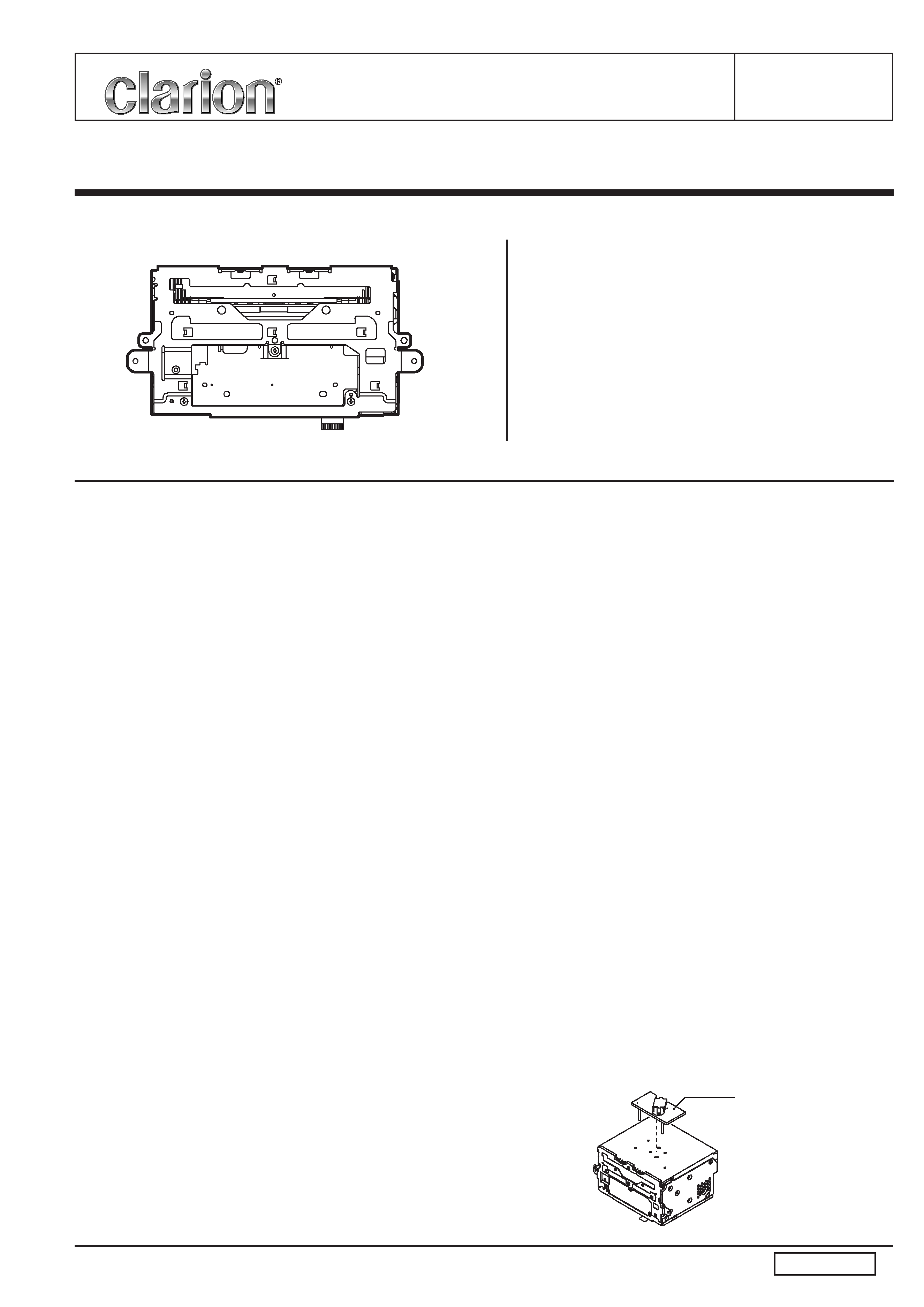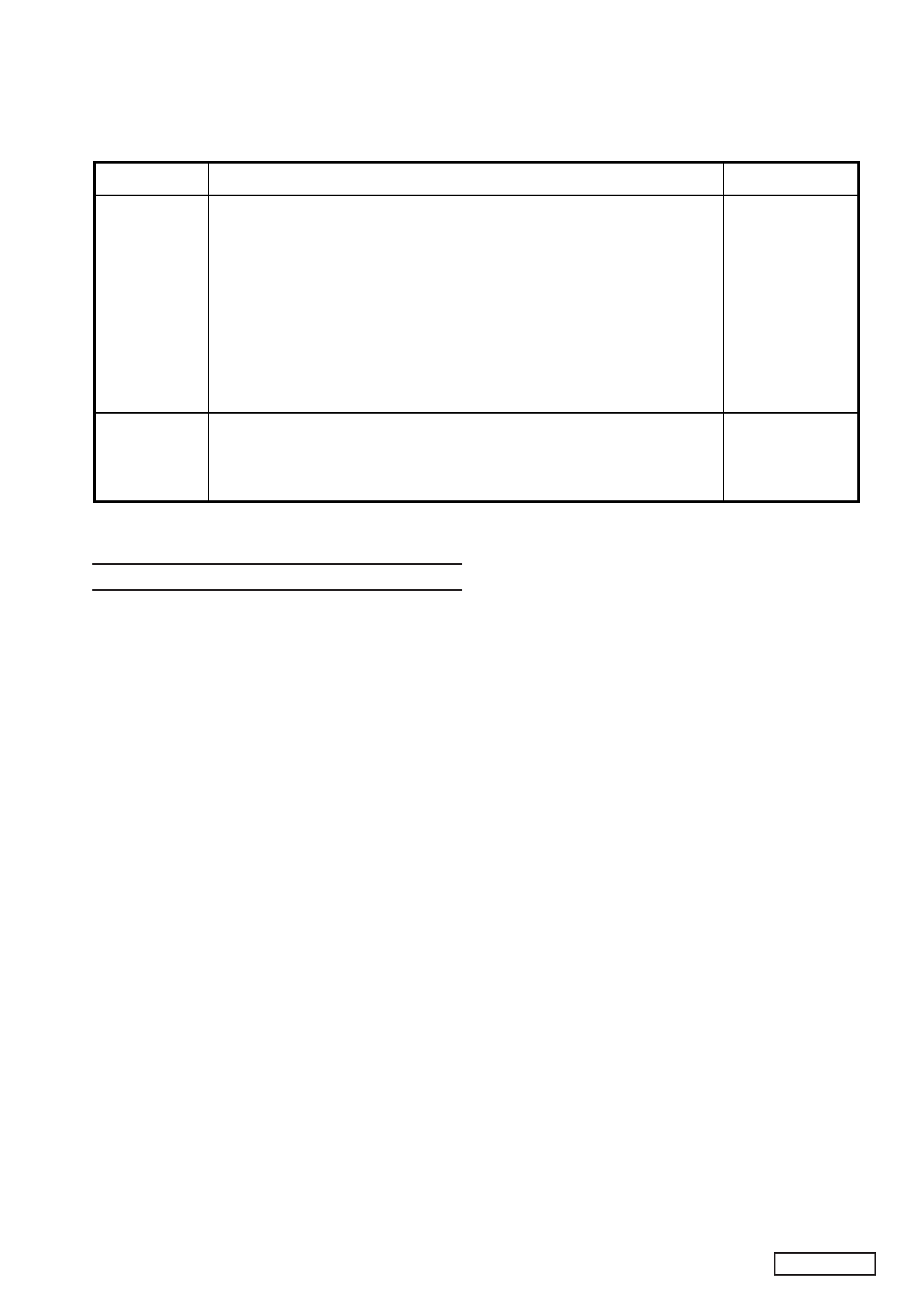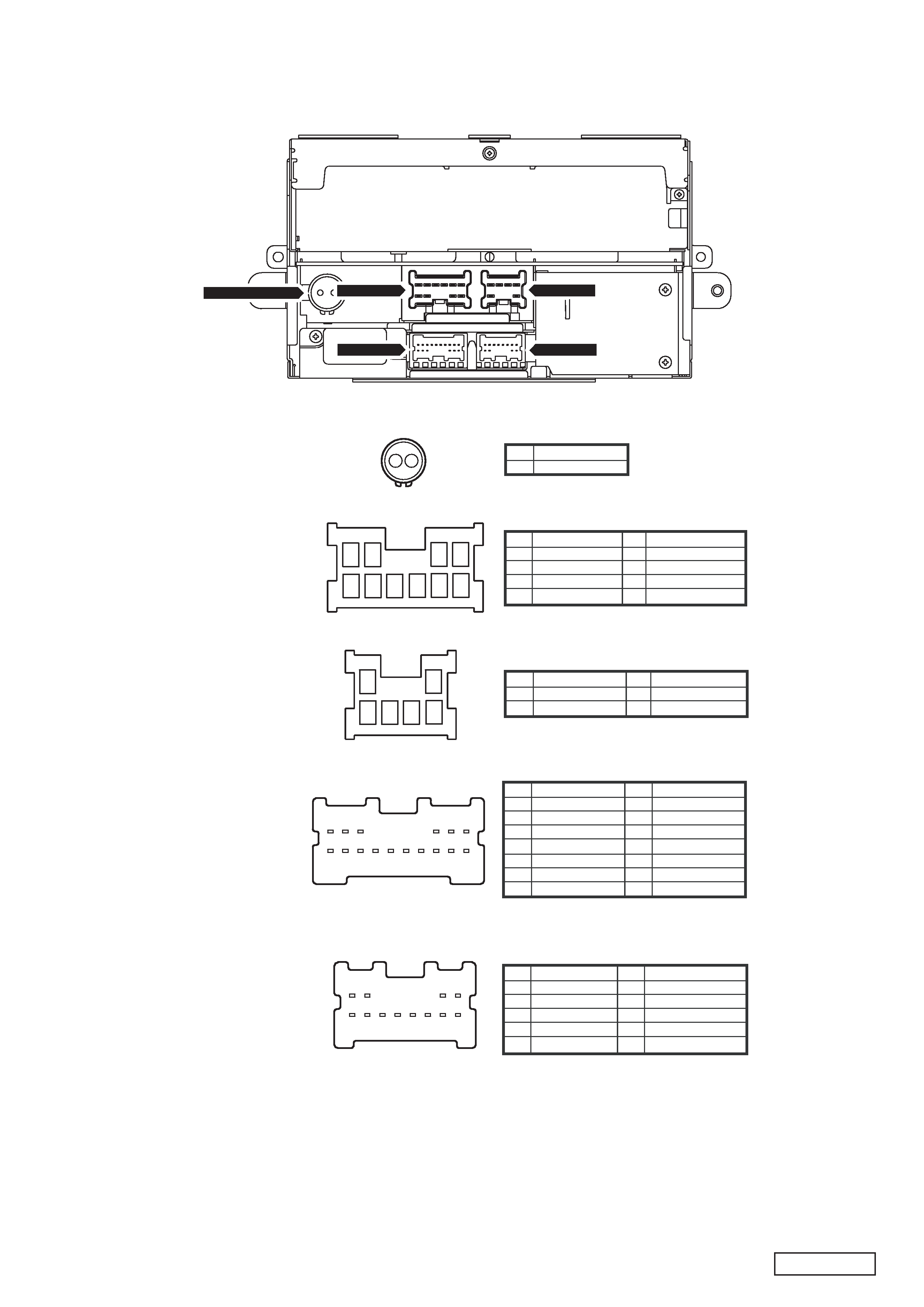
PP-2665D-C
- 2 -
CAUTIONS
Use of controls,adjustment,or performance of procedures
other than those specified herein,may result in hazardous
radiation exposure.
The compact disc player should not be adjusted or repaired
by anyone except properly qualified service personnel.
TH I S PRODUC T I ON COMP L I ES W I TH DHHS RU L ES 2 1 C FR
SUBCHA P T ER J AP P L I CA B L E A T DA T E OF MANUF ACTURE .
I N T E R F ER ENC E T H A T MA Y C AU S E U ND E S I R E D
OP E R A T I ON .
T H I S D E V I CE COMP L I E S W I T H P A R T 1 5 OF T H E F CC
RU L E S . OP E R A T I ON I S S U B J E CT T O T H E F O L LOW I NG
TWO CON D I T I ON S : ( 1 ) T H I S D EV I C E MAY NO T C A U SE
H A RM F U L I N T E R F E R E NC E , A ND ( 2 ) T H IS D E VI C E MU S T
AC CE P T AN Y I N T E R F E RE NC E R EC E I V E D , I N C L UD I NG
Th i s p roduc t i nc l udes t echno l ogy owned by Mi c roso f t Co rpor a t i on and
canno t be used or d i s t r i bu t ed wi t hou t a l i cense f rom MSLGP.
Cl a r i o n
C o . , L t d
5 0
K A M I T O D A , T O D A
S H I , S AI T A M A
KEN , J APA N
MO D E L
N O
1 2 V (-) G R O U N D
P/ N
F M : 8 7. 75 M H z - 1 0 7. 9M H z
M5
( F L AT MACHI NE SCRE W)
M A N U F A CT UR E D
8m m M A X
FR E Q U E N C Y
R A N G E
IS O
M O UN T
S CR E W
AM : 5 3 0 k H z - 1 7 1 0 k H z
S E RI A L
NO .
TH I S P R O D U C TI O N C O MP L I E S WI TH D H H S R U L E S 2 1 C F R
SU BC H A PT ER J
A P P L I C A BL E A T D AT E O F MA N U F A C T U R E .
I N T E R F ER EN C E
T H A T
M A Y
C AU S E
U N D E S I R E D
OP E R A T I O N .
TH I S
D E V I C E
C O M P L I E S
WI TH P A R T
1 5
O F
TH E
F C C
R U L E S .
O PER AT I O N I S
S U B J E C T
T O T H E
F O L L O WI N G
T WO C O N D I T I O N S: ( 1 )
T H I S
D EV I C E
M AY
N O T
C AU SE
HA RM F U L
I N T E R F E RE NCE , A N D( 2 )
T H I S
DE V I CE
M U S T
A C CE P T
A N Y
I NT E R F E RE NC E
R E C E I V E D , I N CL UDI N G
Thi s pr oduc t i nc l udes t ec hnol ogy owned by Mi c r os of t Cor por at i on and
c annot be us ed or di s t r i but ed wi t hout a l i c ens e f r om MSLGP.
NISSAN
Top view of the unit
Guide label
ERROR HISTORY OF CD CHANGER
1. The Switch panel unit (ES unit) is connected, and All
OFF situation.
2. It becomes a version display mode by pushing the M1
key and the M6 key at the same time long.
3. When the CD key is pushed, the error history of mecha-
nism is displayed.
4. In addition, when the CD key is pushed, the error history
that has been accumulated is sequentially displayed next.
5. When the DISP key is pushed while displaying the error
history, the error history is deleted.
6. Please turn off B/U or ACC to make clear the version
display mode.
To engineers in charge of repair or
inspection of our products.
Before repair or inspection, make sure to follow the
instructions so that customers and Engineers in
charge of repair or inspection can avoid suffering
any risk or injury.
1. Use specified parts.
The system uses parts with special safety features against
fire and voltage. Use only parts with equivalent character-
istics when replacing them.
The use of unspecified parts shall be regarded as remod-
eling for which we shall not be liable. The onus of product
liability (PL) shall not be our responsibility in cases where
an accident or failure is as a result of unspecified parts
being used.
2. Place the parts and wiring back in their original positions
after replacement or re-wiring.
For proper circuit construction, use of insulation tubes,
bonding, gaps to PWB, etc, is involved. The wiring con-
nection and routing to the PWB are specially planned us-
ing clamps to keep away from heated and high voltage
parts. Ensure that they are placed back in their original
positions after repair or inspection.
If extended damage is caused due to negligence during
repair, the legal responsibility shall be with the repairing
company.
3. Check for safety after repair.
Check that the screws, parts and wires are put back se-
curely in their original position after repair. Ensure for safety
reasons there is no possibility of secondary ploblems
around the repaired spots.
If extended damage is caused due to negligence of repair,
the legal responsibility shall be with the repairing company.
4. Caution in removal and making wiring connection to the
parts for the automobile.
Disconnect the battery terminal after turning the ignition
key off. If wrong wiring connections are made with the bat-
tery connected, a short circuit and/or fire may occur. If ex-
tensive damage is caused due to negligence of repair, the
legal responsibility shall be with the repairing company.
5. Cautions regarding chips.
Do not reuse removed chips even when no abnormality is
observed in their appearance. Always replace them with
new ones. (The chip parts include resistors, capacitors,
diodes, transistors, etc). The negative pole of tantalum
capacitors is highly susceptible to heat, so use special care
when replacing them and check the operation afterwards.
6. Cautions in handling flexible PWB
Before working with a soldering iron, make sure that the
iron tip temperature is around 270 . Take care not to ap-
ply the iron tip repeatedly(more than three times)to the
same patterns. Also take care not to apply the tip with force.
7. Turn the unit OFF during disassembly and parts replace-
ment. Recheck all work before you apply power to the unit.
8. Cautions in checking that the optical pickup lights up.
The laser is focused on the disc reflection surface through
the lens of the optical pickup. When checking that the la-
ser optical diode lights up, keep your eyes more than 30cms
away from the lens. Prolonged viewing of the laser within
30cms may damage your eyesight.
9. Cautions in handling the optical pickup
The laser diode of the optical pickup can be damaged by
electrostatic charge caused by your clothes and body. Make
sure to avoid electrostatic charges on your clothes or body,
or discharge static electricity before handling the optical
pickup.
9-1. Laser diode
The laser diode terminals are shorted for transporta-
tion in order to prevent electrostatic damage. After
replacement, open the shorted circuit. When remov-
ing the pickup from the mechanism, short the termi-
nals by soldering them to prevent this damage.
9-2. Actuator
The actuator has a powerful magnetic circuit. If a
magnetic material is put close to it. Its characteris-
tics will change. Ensure that no foreign substances
enter through the ventilation slots in the cover.
9-3. Cleaning the lens
Dust on the optical lens affects performance. To
clean the lens, apply a small amount of isopropyl
alcohol to lens paper and wipe the lens gently.












